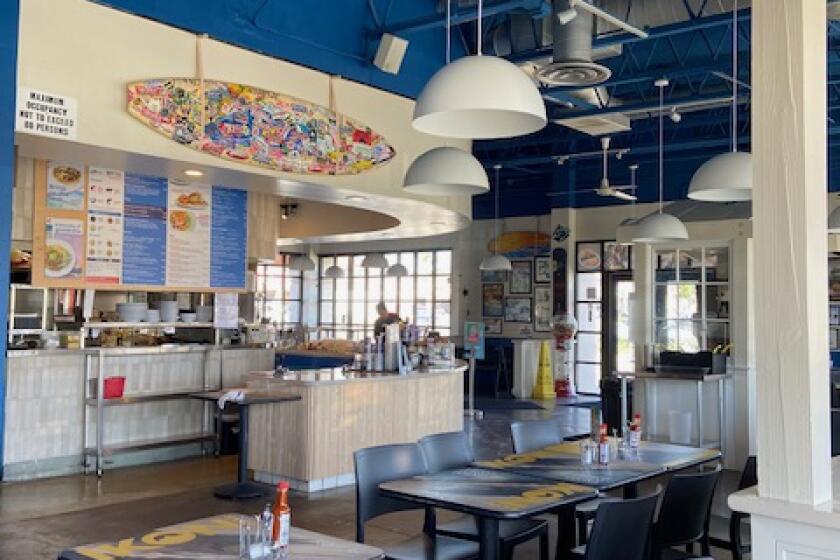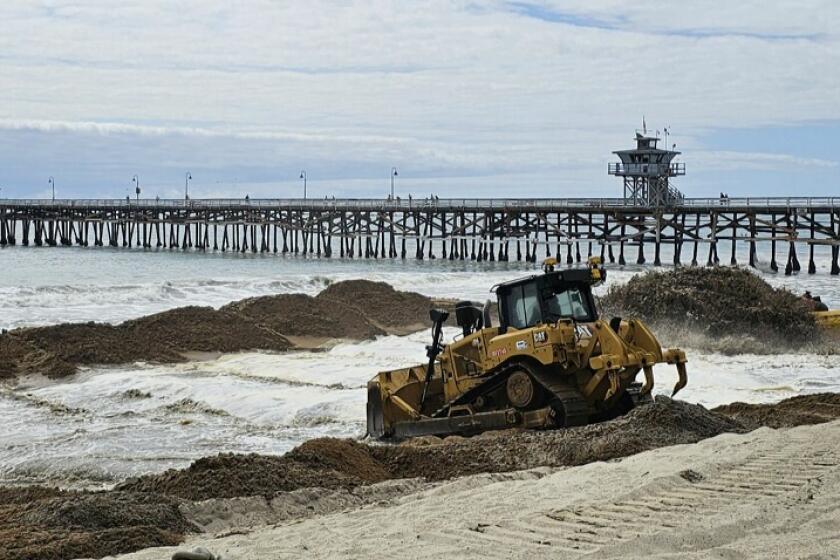In ‘American Visionary’ exhibit, Bowers Museum examines JFK’s youthful dynamism

He was the embodiment and voice of a new generation — in politics and in American public life.
Yet he was gunned down in public, an assassination that still resonates today as a terrible American tragedy.
John F. Kennedy, the 35th president of the United States, has become an iconic figure in American politics and history. Though he was killed in Dallas before finishing his first term, his ideas and potential are still remembered, and images of his public and private lives still carry special meaning and impact.
Through June 3, Bowers Museum in Santa Ana is presenting “American Visionary: John F. Kennedy’s Life and Times,” a photo exhibition that captures Kennedy during his childhood days, his marriage to Jacqueline Bouvier, his terms as a Massachusetts senator, his run for the presidency and his time as leader of the United States and the free world.
“It’s a simple exhibition — each picture has its own story, and I’m very proud the Kennedy family came and asked me to do this,” said Lawrence Schiller, the curator of the exhibition.
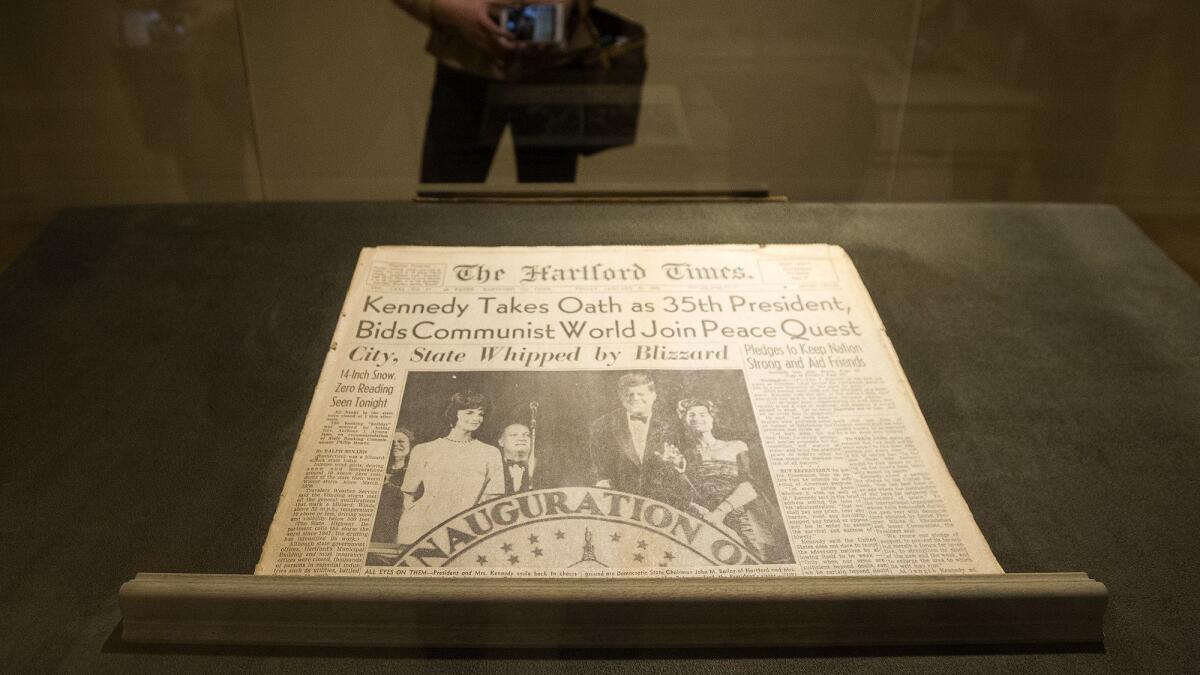
Schiller is an accomplished photographer, author, publisher and award-winning film director, producer and screenwriter. He famously photographed Lee Harvey Oswald and his rifle in Dallas right after Kennedy’s assassination.
Schiller culled through hundreds of Kennedy photographs and narrowed in on 79 of the most dynamic and resonant by seasoned photographers. Some of the images are extremely well-known, like Paul Schutzer’s shot of the president and first lady at one of their five inaugural balls, with a smiling, fresh-faced President Kennedy pointing to the viewer’s left and crowds of expectant ball attendees gazing at him from below.
The image of a 16-year-old Bill Clinton shaking hands with Kennedy at the White House Rose Garden, taken by Arnold Sachs in 1963, would become a symbolic tool used by Clinton during the 1992 Democratic National Convention and Clinton’s own successful run for the White House.
But other images have been less widely seen, such as JFK baby pictures and the youthful, growing Kennedy clan, as well as a 1957 image of a college-aged Kennedy holding a puppy while traveling in Europe.
There are pictures of Kennedy as a Harvard University graduate, a Navy Reserve officer, a 28-year-old candidate for Congress and a president being lifted to the door of Air Force One by a cherry picker because his bad back prevented him from climbing stairs.
One spontaneous 1962 image by Bill Beebe captures Kennedy emerging from an ocean swim in Santa Monica, dripping with water and surrounded by giddy admirers.
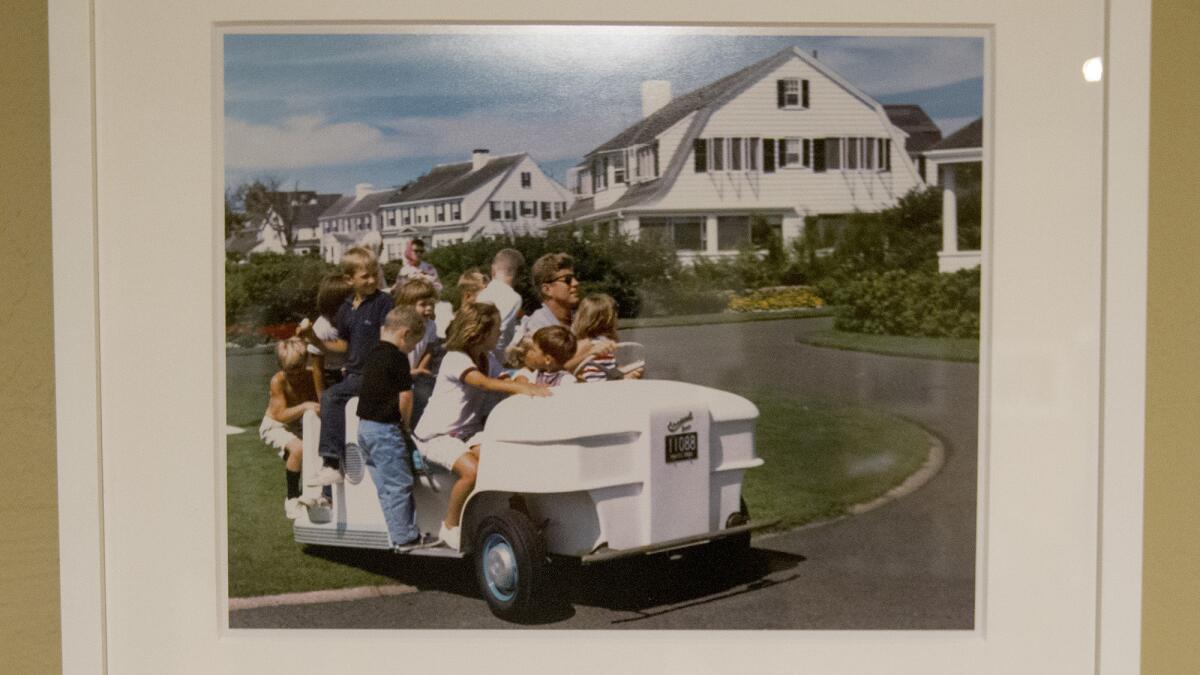
“Kennedy spoke simply,” said Schiller, 81, who grew up in San Diego and Los Angeles. He now splits his time between Pennsylvania and New York. “He spoke more about what America should be about. Put aside that the family had money. He inspired young people, that they can achieve what they want to achieve. Because he was one of the youngest presidents we ever had. Because he ran on his youth, and he spoke to young people in America directly.”
This photo exhibition, complemented by Kennedy-era magazines, newspapers and books by the late president, originated at the Smithsonian American Art Museum in May 2017. A version of the show exhibited at the New York Historical Society. The collection of prints and ephemera that were on display at the Smithsonian came to the Bowers and opened March 10. It’s the only West Coast venue for this exhibition.
“We’ve been doing a lot of photography shows, one or two a year,” said Victoria Gerard, curator of collections and special exhibitions at the Bowers. “I really like programming them in because they reach a wide audience, also a younger demographic as well — those who are into social media and image-based media.”
Gerard said the exhibit also touches an older audience who remember Kennedy’s presidency and assassination. She added that the issues Kennedy dealt with are still relevant today.
“His administration spans so many things — civil rights, NASA, the arts. We want to share his legacy.”
In connection with the Kennedy photo exhibit, Bowers is presenting a number of related programs, including a screening of the documentary “JFK Remembered: 50 Years Later” on March 25, followed by a discussion with the film’s director and producer Robert Kline; a lecture March 29 on “Building Community Through the Arts” with Malissa Shriver, co-founder of CREATE CA and president of Turnaround Arts: California; and a screening of Oliver Stone’s movie “JFK” on April 22.
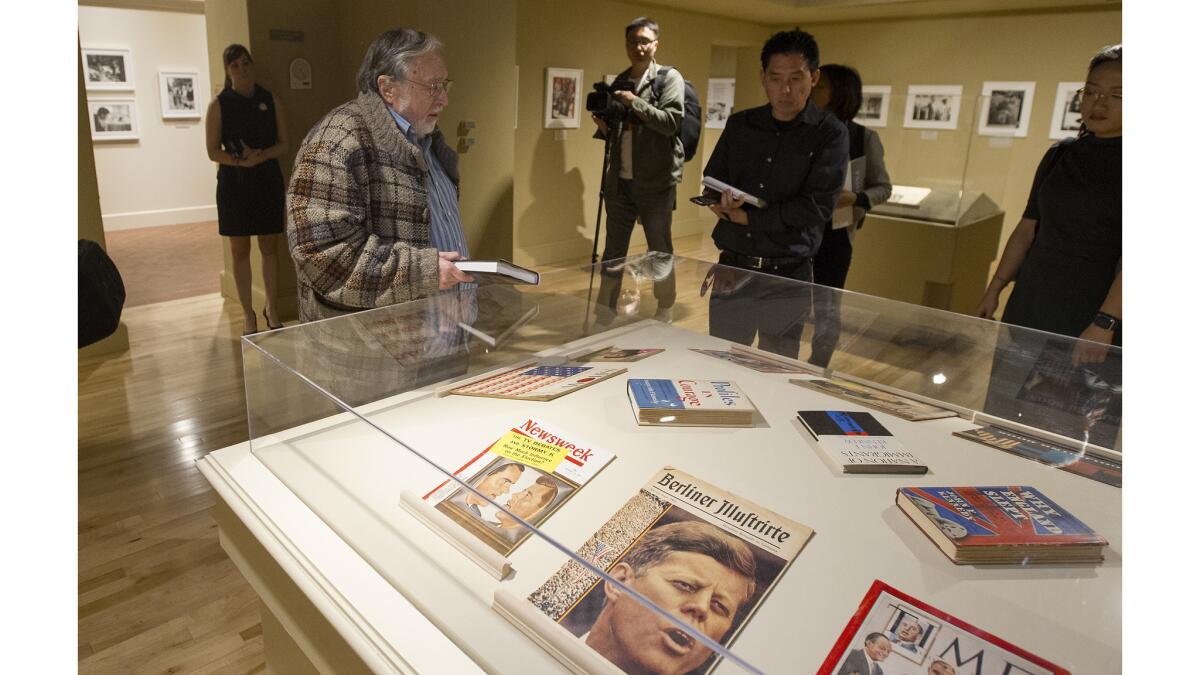
If You Go
What: “American Visionary: John F. Kennedy’s Life and Times”
When: Through June 3; hours are 10 a.m.-4 p.m. Tuesdays through Sundays
Where: Bowers Museum, 2002 N. Main St., Santa Ana
Cost: $10-$15 (free for children under 12)
Information: (714) 567-3600 or bowers.org.
Richard Chang is a contributor to Times Community News.
All the latest on Orange County from Orange County.
Get our free TimesOC newsletter.
You may occasionally receive promotional content from the Daily Pilot.


